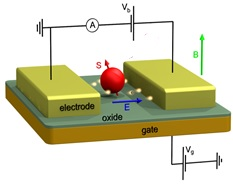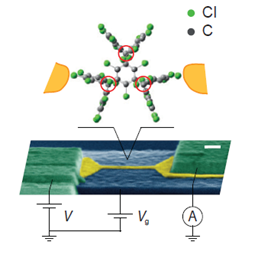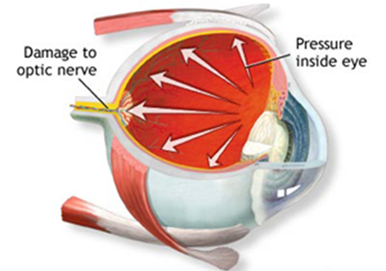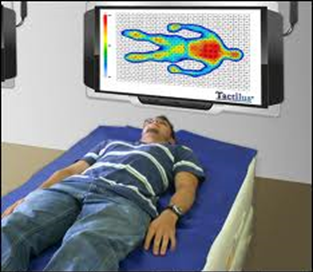Jaume Veciana's Research Interests
Molecular electronics
We can divide our work in this field in the following three sub-areas:
Unimolecular Electronics and Molecular Spintronics
 |
 |
The fabrication of electronic devices based on molecules as active components are considered an approach that would enable to reaching the maxima limits of miniaturization; i.e. the molecule with sizes around 10 Å. We are working on the synthesis of novel redox- and magnetically-active molecules with the appropriate electronic and chemical structures to be integrated in molecular junctions, i.e. between two/three electrodes. Our endeavour is to assess the performance of the molecular junctions based on either self-assembled monolayers or single-molecules. Further, we are working on the emerging field of organic spintronics that aims at exploiting not only the charge transport but also the spin of the electrons in these junctions with the ultimate goal to develop memory devices, like qubits.
Molecular and Supramolecular Switches
 |
|
Bistable molecules that can be externally switched between two (or more states) with different properties are candidate systems as active elements in information storage devices. To move towards applications it is imperative to immobilize and organize these molecules in solid supports or in crystals exhibiting such bistabilities. Thus, we are obtaining and studying organic D–A dyad and the associated bistability phenomenon in solution and solid state when an external stimulus (i.e. T, P or light) is applied forming the zwitterionic state with different physical properties. We are also working on the preparation of hybrid surfaces that consist of inorganic –ITO, Au, etc- conducting supports functionalized with a chemically bonded self-assembled monolayer (SAM) of electroactive molecules with two (or more) stable redox states. By the application of an electrical input, the molecular states are switched and accordingly the optical, magnetic or electrical response of the hybrid surfaces is modified which can be exploited as readable outputs.
E-skin Devices based on Conducting Nanocomposite Thin-films
 |
 |
E-skin devices based on conducting polymeric nanocomposite thin-films able to respond with an ultra-high sensitivity to temperature changes and tiny deformations as well as to the NIR impinging radiation are developed. The progress of such pyro- and piezo-resistive thin-films are made considering a holistic perspective including: design and synthesis of new molecules and their derived conducting ion-radical organic salts, determination of the structure and electronic properties of such ion-radical salts, their integration into nanocomposite thin-films as nanocrystals, the device fabrication and integration of the devices. Applications of such E-skin devices for biomedical applications as sensors for human constants -blood pressure, intraocular pressure, temperature, etc- are pursued.







